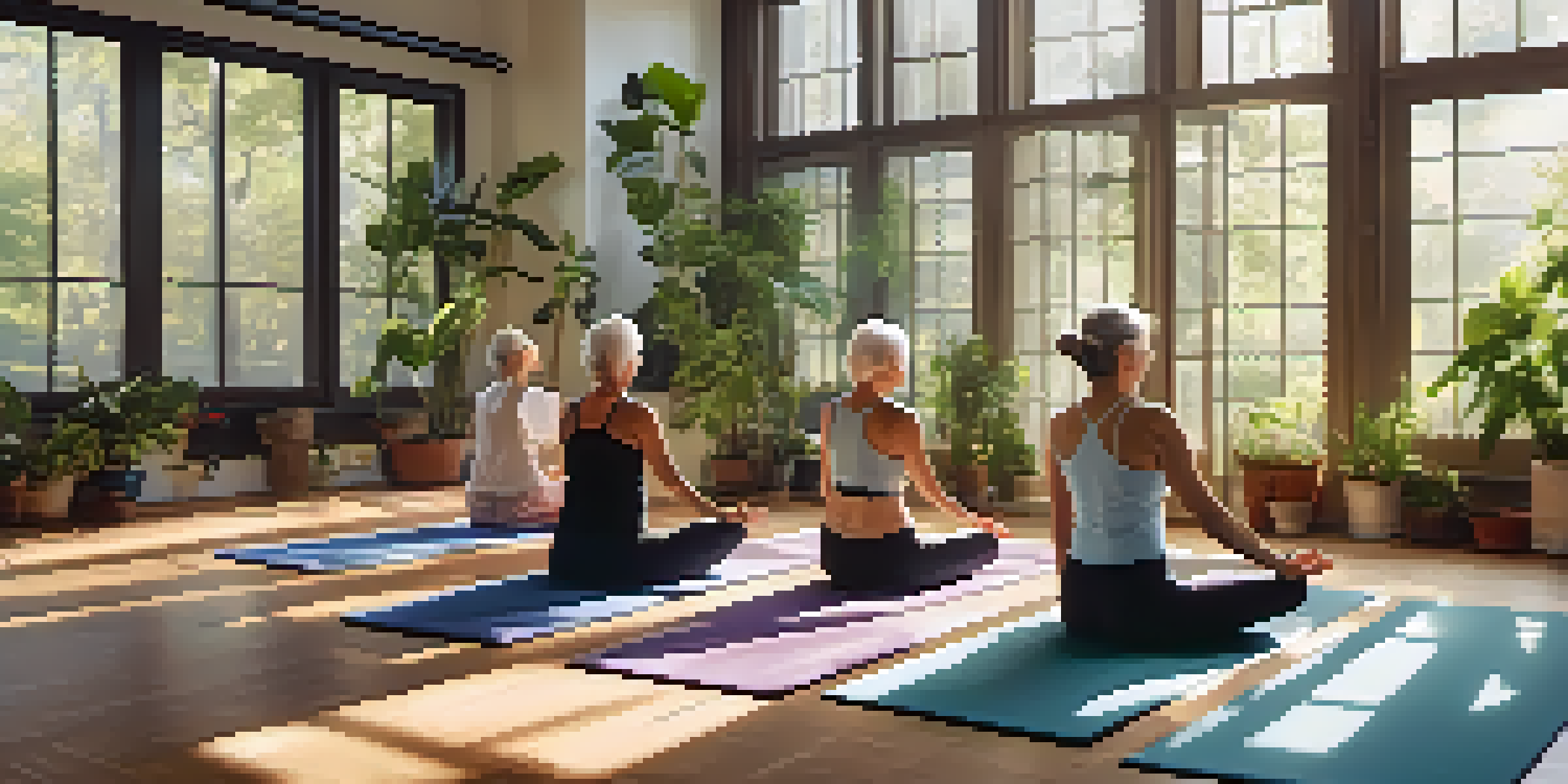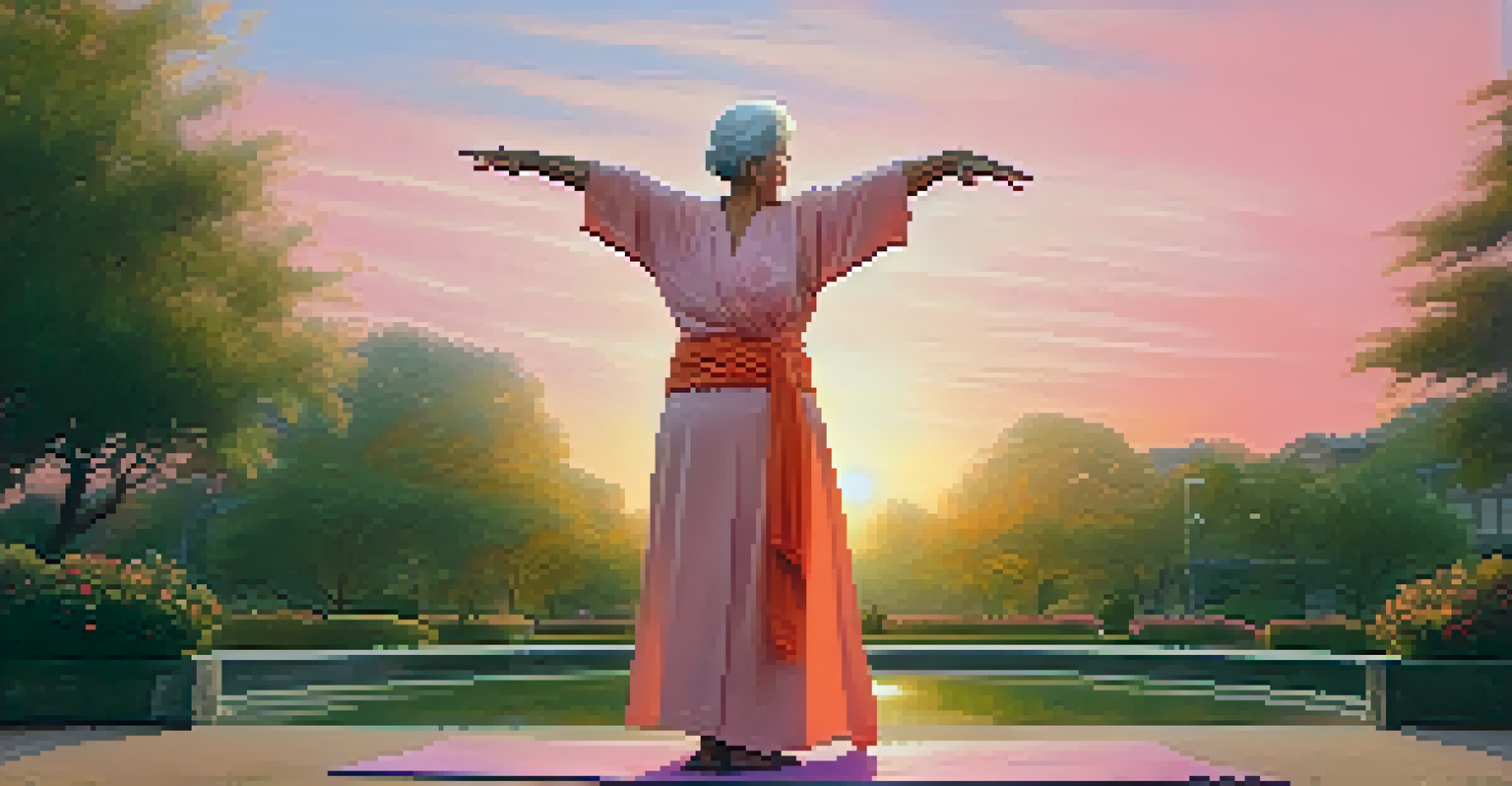The Role of Yoga in Maintaining Joint Health for Seniors

Understanding Joint Health and Its Importance for Seniors
Joint health is crucial for seniors as it affects mobility and overall quality of life. Healthy joints allow for daily activities, from walking to gardening, which can significantly contribute to physical and mental well-being. As we age, wear and tear on the joints can lead to conditions like arthritis, making it essential to prioritize joint care.
The greatest wealth is health.
Maintaining joint health isn’t just about avoiding pain; it’s also about staying active and independent. When joints are functioning well, seniors can enjoy activities they love without discomfort. This independence boosts self-esteem and encourages social interactions, which are vital for mental health.
Incorporating practices like yoga can play a significant role in preserving joint health. Not only does yoga promote flexibility and strength, but it also helps in reducing stiffness, making it an excellent option for seniors looking to maintain an active lifestyle.
How Yoga Enhances Flexibility and Strength in Joints
One of the primary benefits of yoga is its ability to enhance flexibility. Many yoga poses involve stretching and lengthening muscles, which can help maintain the range of motion in joints. Improved flexibility reduces the risk of injuries and strains, making everyday movements easier and safer.

Strength is equally important in supporting joint health. Yoga incorporates body-weight exercises that build muscle strength, particularly in the legs, core, and back. Strong muscles provide better support to joints, which can help alleviate pressure and prevent pain.
Joint Health is Vital for Seniors
Maintaining joint health is crucial for seniors as it directly impacts their mobility and overall quality of life.
By practicing yoga regularly, seniors can develop a balanced routine that nurtures both flexibility and strength. This combination is essential not only for joint health but also for overall physical stability, reducing the risk of falls and enhancing confidence in movement.
The Role of Breath in Yoga and Joint Health
Breath control is a fundamental aspect of yoga that significantly impacts joint health. Deep, mindful breathing helps to increase oxygen flow to the muscles and joints, promoting relaxation and reducing tension. This can be especially beneficial for seniors, who may experience more stiffness and discomfort.
Yoga is the journey of the self, through the self, to the self.
When practicing yoga, the connection between breath and movement creates a meditative experience. This mindfulness can lead to reduced stress levels, which is crucial since stress can exacerbate physical pain and discomfort. By calming the mind, seniors can focus on their movements and listen to their bodies more effectively.
Moreover, incorporating breathwork into yoga practice helps in improving circulation. Better circulation nourishes the joints and surrounding tissues, supporting their health and function over time, making breath an integral part of maintaining joint well-being.
Yoga Poses Beneficial for Joint Health in Seniors
Certain yoga poses are particularly beneficial for joint health, especially for seniors. Poses like the Cat-Cow stretch help to improve spinal flexibility and promote joint mobility in the back. These gentle movements can alleviate stiffness, making it easier to perform daily activities.
The Warrior poses are excellent for strengthening the legs and improving balance, which is crucial for preventing falls. As seniors build strength in their legs, they not only support their joints but also enhance their overall stability. This is vital for maintaining independence as they age.
Yoga Boosts Joint Flexibility
Practicing yoga enhances flexibility and strength in joints, which helps seniors stay active and independent.
Another great pose is the Child's Pose, which gently stretches the hips, thighs, and back. This restorative position can provide relief to overworked joints and is a perfect way to relax after a more intense practice. By incorporating a variety of poses, seniors can tailor their yoga practice to their specific joint health needs.
The Importance of Consistency in Yoga Practice
Consistency is key when it comes to reaping the benefits of yoga for joint health. Like any exercise routine, practicing yoga regularly can lead to lasting improvements in flexibility, strength, and overall joint function. Seniors should aim for at least two to three sessions a week to see significant results.
Developing a routine not only builds strength and flexibility but also fosters a sense of community if practiced in groups. Classes designed for seniors can provide a supportive environment where participants encourage each other, making the journey towards joint health more enjoyable.
Setting realistic goals and being mindful of one's body is essential. Seniors can start with shorter sessions and gradually increase the duration as they become more comfortable. This approach not only prevents injury but also encourages a lifelong commitment to maintaining joint health through yoga.
Listening to Your Body: A Key Principle in Yoga
One of the most critical lessons in yoga is the importance of listening to your body. Seniors should pay attention to how their joints feel during practice and adjust poses as needed. This mindfulness helps prevent injuries and ensures that the practice remains beneficial rather than harmful.
Adapting poses or using props, such as blocks or straps, can make yoga more accessible and comfortable. For instance, if a pose feels too intense, modifying it to suit personal comfort levels is perfectly fine. This approach fosters a positive relationship with movement and encourages continued practice.
Listen to Your Body in Yoga
It's essential for seniors to listen to their bodies during yoga practice, adapting poses as needed to prevent injuries.
Moreover, practicing self-compassion is essential. Seniors should remember that every body is different, and it’s okay to have limitations. Embracing this mindset allows for a more enjoyable and beneficial experience in yoga, focusing on progress rather than perfection.
Consulting with Healthcare Professionals Before Starting Yoga
Before starting any new exercise program, including yoga, seniors should consult with their healthcare providers. This is particularly important for those with pre-existing conditions or joint issues, as professionals can provide tailored advice and recommendations. A healthcare professional can help determine which poses are safe and beneficial.
Additionally, joining a class led by a certified instructor experienced in working with seniors can enhance safety and effectiveness. Instructors can provide modifications and ensure that participants are practicing correctly, reducing the risk of injury. This supportive environment is invaluable for new practitioners.

By collaborating with healthcare providers and qualified instructors, seniors can embark on their yoga journey with confidence. This proactive approach not only promotes joint health but also encourages a holistic view of wellness, integrating physical activity, mindfulness, and self-care.